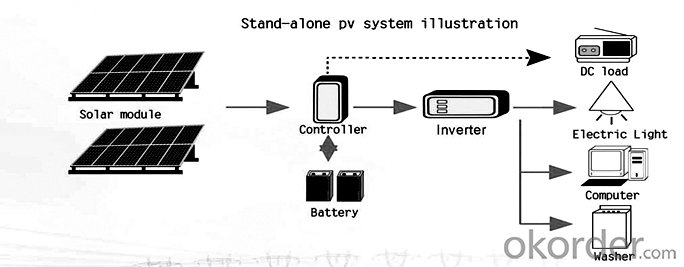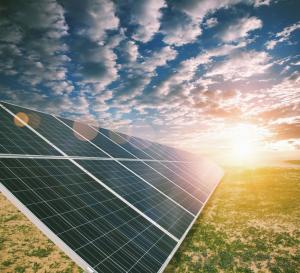Polycrystalline Silicon Solar Panel 265w
- Loading Port:
- Nanjing
- Payment Terms:
- TT OR LC
- Min Order Qty:
- 200000 watt
- Supply Capability:
- 20000000 watt/month
OKorder Service Pledge
OKorder Financial Service
You Might Also Like
Solar cell module production process
Line called packaging line components, packaging is the production of solar cells a key step in the packaging process without a good, multi-well battery is also not a good component of production boards. Battery package not only the battery life is guaranteed, but also to enhance the combat strength of the battery. Product quality and high service life is to win can be the key to customer satisfaction, so the quality of components of the package board is very important.
Introduction
This installation Manual contains essential information for the electrical and mechanical installation that your must know before installing CUSTOMER PV modules. This also contains safety information you need to be familiar with .All the information described in this manual are the intellectual property of CNBM and based on the technologies and experiences that have been acquired and accumulated in the long history of CUSTOMER. This document does not constitute a warranty, expressed or implied.
CUSTOMER does not assume responsibility and expressly disclaims liability for loss, damage, or expense arising out of in anyway connected with installation, operation, use or maintenance of the PV modules. No responsibility is assumed by CUSTOMER for any infringement of patents or other rights of third parties that may result from use of PV module.
CUSTOMER reserves the right to make changes to the product, specifications or installation manual without prior notice.
Work Principle

Data sheet
Maximum power | 265W |
Cell type(mm) | Polycrystalline solar cell 156*156 |
Number of cell(pcs) | 60(6*10) |
Manufacture site | China |
Open-circuit voltage(voc) | 37.7V |
Maximum power voltage(vmp) | 30.6V |
Short-circuit current(isc) | 9.03A |
Optimum operating current(imp) | 8.66A |
Power tolerance | 0~+5W |
Module efficiency | 16.3% |
Dimensions(mm) | 1640*992*40 |
Weight | 19 kg |
Backsheet | Silver |
Frame Colar | White |
Frame | Anodized Aluminum Alloy |
FAQ:
Q1: Why buy Materials & Equipment from OKorder.com?
A: All products offered byOKorder.com are carefully selected from China's most reliable manufacturing enterprises. Through its ISO certifications, OKorder.com adheres to the highest standards and a commitment to supply chain safety and customer satisfaction.
Q2: What is a solar PV module?
A: A solar PV module consists of many solar cells that are connected together (typically in series) and packaged in a frame (typically made of aluminum).
Q3: What are the advantages and disadvantages of monocrystalline solar PV modules?
A: Monocrystalline solar PV modules are the most efficient type of solar PV modules, with the exception of CdTe thin film solar PV modules. As a result, monocrystalline solar PV modules are more expensive when compared to almost all other types of solar PV modules.
Q4: What is the typical service life of a solar PV module?
A: The typical life of a PV module is 25 years. However, superior quality PV modules boast service lives up to 35-40 years (electrical generating capacity is often reduced, however by that point).
- Q:Can solar panels be used to power a waste management facility?
- Yes, solar panels can certainly be used to power a waste management facility. Solar energy is a renewable and sustainable source of power that can be harnessed to generate electricity. By installing solar panels, the waste management facility can reduce its reliance on traditional grid electricity and lower its carbon footprint. This clean energy can be used to power various operations within the facility, such as waste processing, recycling equipment, lighting, and other electrical needs.
- Q:Can solar panels be installed on restaurants or hotels?
- Yes, solar panels can be installed on restaurants or hotels. In fact, many restaurants and hotels have been adopting solar energy as a sustainable and cost-effective solution to reduce their carbon footprint and electricity bills. Installing solar panels on rooftops or in parking lots can generate clean energy, helping these establishments become more environmentally friendly while also saving money on electricity expenses.
- Q:I would like to know how much a solar panel would cost for a wingspan of 208 ft for a plane
- 2,000 that we have used 4 project , its based on the cell size
- Q:Can solar panels be installed on residential homes?
- Yes, solar panels can be installed on residential homes.
- Q:Well I was thinking about the idea of renovating either a smaller school bus or building a tiny house and I was wondering if i can get some information on the size and watts panel should I use or more like how to get that whole solar energy in motion. Any infor and links would help
- I think that typical solar panels are 2'x4' and produce something like 800-000 wh per day. (That's 0.8 - kwh per day.) More in the summer, less in the winter, if they're aimed sort of at the sun. There are newer, more expensive panels that produce more. There are also thin film panels that are less expensive, and probably more sturdy. You then have a couple choices. In a house, you'd have an expensive inverter to connect to the utility power, so you can have power at night when your panels aren't generating anything. In a trailer, you want 2-4-6 deep cycle car batteries to store the power. Then you could have an inverter to convert that power to 20v AC, so you could use normal appliances. Or, you could buy appliances that run on 2 volts DC. Maybe a combination of both. You'll need to figure out how much power you're going to use, so you know how many panels and batteries you're going to need. The calculation is easy. Figuring out how much power you need is hard. You need deep cycle batteries because you can repeatedly charge them way up and run them way down. Ordinary batteries die fairly quickly when you do that.
- Q:Are there any maintenance requirements for solar panels?
- Yes, solar panels do require some maintenance. Regular cleaning of the panels to remove dirt, dust, and debris is recommended to ensure optimal performance. Additionally, it is important to inspect the panels for any signs of damage or wear, and if necessary, have them repaired or replaced. Monitoring the system's performance and checking the connections regularly is also crucial for identifying any issues.
- Q:If a solar panel is a .5kW system, what length of time is it putting out that much power? Every hour?
- Solar panels are rated under standard test conditions (STC), a certain amount of light at a certain distance, at a certain temperature, etc. A kW, or kilo watt, is 000 watts. So for the amount of time that the sun meets those conditions, the rate of output is 500 watts. An average location has an average of 5 sun hours a day, the total time that you produce the rated output. Watts is a rate, like miles per hour (mph), how fast it is going. Watt hours, or kilo watt hours (kwh) is a quantity, like miles. So if you drive 50 mph for 5 hours, you went 250 miles (50 mph x 5 hours). If you produce .5kw for 5 hours, you have the potential to produce 7.5kwh a day. Multiply that by 30 days in a month, you get 225kwh a month. In reality you will lose about 30% of the rated power from less than ideal weather, system losses, etc., so it's more like 50kwh a month. You can look at your electric bill to see how many kwh you use a month, maybe around 000kwh, and see what percentage of your usage a system like that can power.
- Q:Can solar panels be used to power a farm?
- Yes, solar panels can be used to power a farm. By harnessing the sun's energy, solar panels can generate electricity that can be used to power various farm operations such as pumps, irrigation systems, lighting, and even machinery. This renewable energy source offers a sustainable and cost-effective solution for farmers looking to reduce their reliance on traditional power sources and reduce their carbon footprint.
- Q:Can solar panels be integrated into buildings?
- Yes, solar panels can be integrated into buildings. In fact, many buildings today incorporate solar panels into their design to generate clean and sustainable electricity. These integrated solar panels can be installed on rooftops, facades, or even as part of the building materials themselves. This integration helps to maximize energy efficiency, reduce carbon emissions, and lower energy costs for the building occupants.
- Q:Can solar panels be connected to the grid?
- Yes, solar panels can be connected to the grid through a process called grid-tie or grid-connected system. This allows excess electricity generated by the solar panels to be fed back into the grid, reducing reliance on traditional power sources and potentially earning credits or payments from the utility company.
1. Manufacturer Overview |
|
|---|---|
| Location | |
| Year Established | |
| Annual Output Value | |
| Main Markets | |
| Company Certifications | |
2. Manufacturer Certificates |
|
|---|---|
| a) Certification Name | |
| Range | |
| Reference | |
| Validity Period | |
3. Manufacturer Capability |
|
|---|---|
| a)Trade Capacity | |
| Nearest Port | |
| Export Percentage | |
| No.of Employees in Trade Department | |
| Language Spoken: | |
| b)Factory Information | |
| Factory Size: | |
| No. of Production Lines | |
| Contract Manufacturing | |
| Product Price Range | |
Send your message to us
Polycrystalline Silicon Solar Panel 265w
- Loading Port:
- Nanjing
- Payment Terms:
- TT OR LC
- Min Order Qty:
- 200000 watt
- Supply Capability:
- 20000000 watt/month
OKorder Service Pledge
OKorder Financial Service
Similar products
New products
Hot products
Related keywords





























